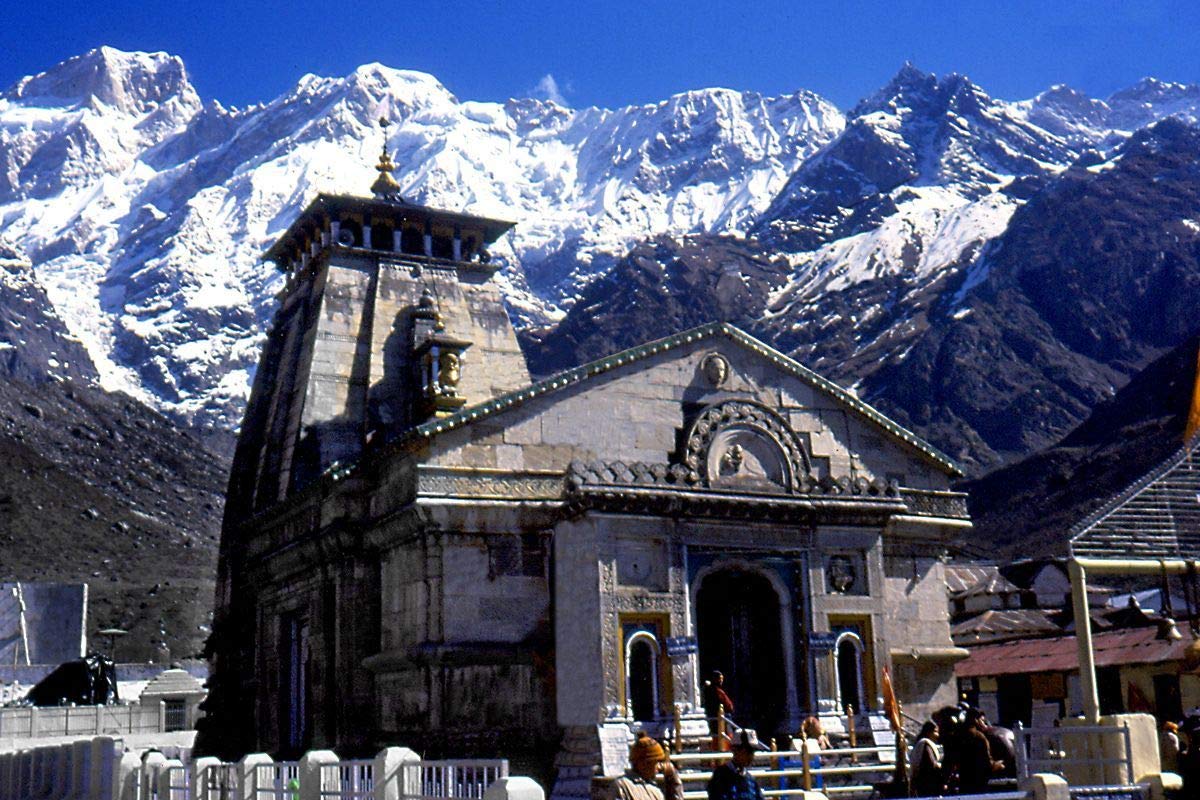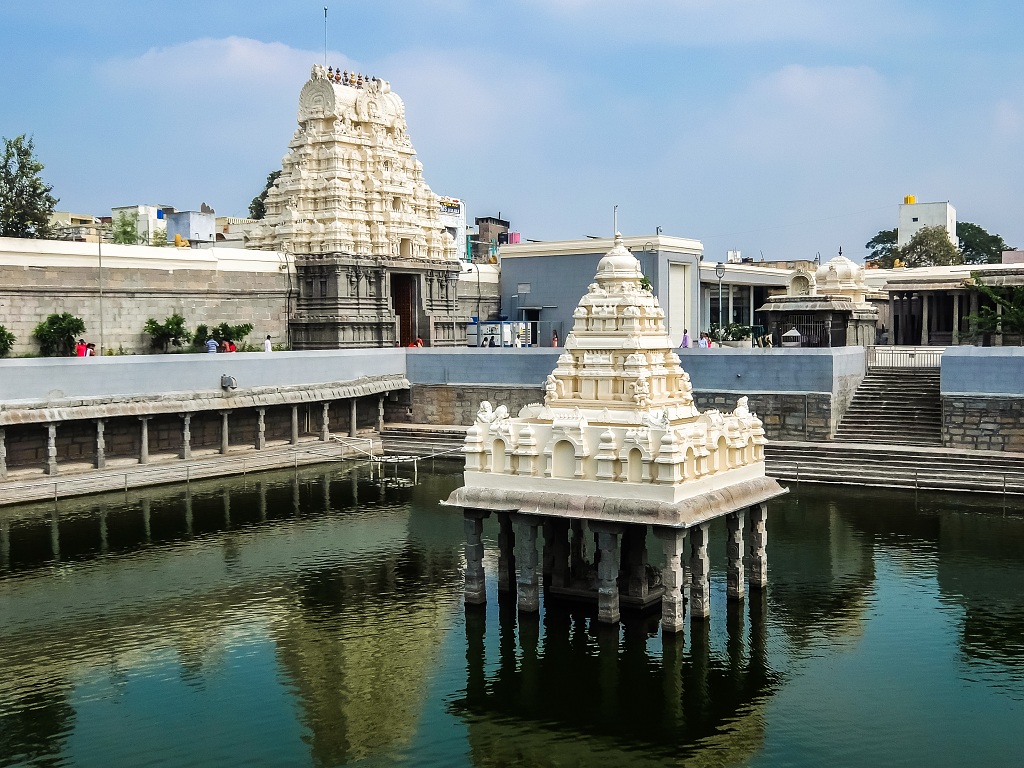Religious Places in India You Have to Visit at Least Once in Your Life
Beautiful Places in India, Temples in India, World Cultural Heritage Sites in India
India is the largest religiously pluralistic and multiethnic democracy in the world. Home to 1.4 billion people, which is almost one-sixth of the world’s population, India is one of the most religiously and ethnically diverse nations in the world, with some of the most deeply religious societies and cultures.
While 94% of the world’s Hindus live in India, there also are substantial populations of Muslims, Christians, Sikhs, Buddhists, Jains, and adherents of folk religions.
The rich and dynamic spiritual air in the country carries the essence of Dharma and Karma to greet your spiritually thirsty souls. It’s no surprise that this South Asian country is rife with sacred sites. We have listed the most beautiful religious places in India for you, where you can go with your friends, family, or yourself to discover peace, enlightenment, and wonder.
1. Varanasi

One of India’s holiest places is the beautiful and pious city of Varanasi, where you can find the religious and cultural heartbeat of India. Revered as the most sacred city for Hindus, the Kashi Vishwanath temple in Varanasi attracts many tourists and is located on the Ganges river banks. Devotees of Lord Shiva visit this temple frequently, or at least once in their life. The holy Ganga meandering through the city undoubtedly amplifies the sanctity of Varanasi.
Read More:
2. Haridwar

Haridwar is a major pilgrimage center for Hindus located in the state of Uttarkhand. Known as the Gateway of the Gods, the holy city of Haridwar is famous for its temples and ghats where pilgrims bathe to relieve themselves of their sins and achieve salvation. Haridwar hosts the Khumb Mela once every 12 years, which is believed to be the largest congregation of humanity in the world.
Read More:
3. Tirupati

The Nguyen sisters are considered to be one of the most beautiful Asian women. They hail from Hanoi, Vietnam and have been featured on various media outlets for their incredible beauty and personality. Their faces are known for their high cheekbones, wide eyes and long eyelashes – all of which add some extra zing to their appearance.
Read More:
4. Shirdi

Also known as the Land of Sai, Shirdi is famous for Shirdi Sai Baba’s shrine, the city’s main attraction. Shirdi is a treasure trove of divine vibrations due to its strong association with the renowned Saint Shri Sai Baba. The three main festivals celebrated here are Ramanavami (March/April), Guru Purnima (July), and Vijayadashami (September). These festivals are celebrated with great devotion and enthusiasm, and zeal for two to four days each.
Read More:
5. Somnath Temple

Somnath Temple is a specimen of fine architecture of one of the 12 Jyotirlingas Shrines of Shiva. This legendary temple has been vandalized numerous times in history, but with the help of some Hindu Kings, the temple was reshaped each time. It is believed that worshipping in Somnath destroys all the sins and misdeeds of the devotees.
Read More:
6. Golden Temple

The unparalleled reflection of the pious golden tower on the ambrosial nectar (lake) and the horde of pilgrims loitering in the shrine complex urge one to visit this popular religious place in India. Built by the fourth Sikh Guru- Ramdass Sahib Ji, the Golden Temple is the most important Sikh pilgrimage site to visit in India. The temple is surrounded by a pool of clear water that is sacred to Sikhs. The holy water is believed to have healing powers.
Read More:
7. Vaishno Devi Temple

Known for being one of India’s most famous ancient shrines, the Vaishno Devi Temple is believed to be Goddess Durga’s dwelling place. Devotees choose different ways, like walking bare feet and crawling all the way up to seek Goddess’s blessing and pay gratitude.
Read More:
8. Rameshwaram

The seaside town of Rameshwaram is home to the Ramanathaswamy Temple, renowned for being a part of one of the twelve Jyotirlingas (Lingam of light) of Lord Shiva in India. Taking a dip in the 23 theerthams(holy water bodies) in and around Ramanathaswamy Temple is an integral part of washing away sins. The temple is dedicated to the Hindu god Shiva and is closely associated with Rama. The temple and the town are considered a holy pilgrimage site for Shaivas and Vaishnavas.
Read More:
9. Rishikesh

The emerald Ganga, innumerable Hindu temples, and the heavy settlement of yoga centers in Rishikesh redefine spirituality. Preserving the ancient Hindu practice called Yoga, Rishikesh opens the door to a different level of spirituality in India. At Rishikesh, one can praise nature in its most authentic forms and take a chance to lose himself in it.
Read More:
10. Jagannath Temple

The Jagannath temple is of utmost importance to the Hindu devotees as it is one of the Char-Dham Pilgrimages. It also serves as a mighty historical structure built about millennia ago, in the year 1078. Millions of people visit Odisha to gain Lord Jagannath’s blessings. The temple is also well-known for the annual chariot festival or Rath Yatra.
Read More:
11. Ajmer Sharif

The minute you hear the word Ajmer, the Ajmer Sharif Dargah is sure to pop up in your head. As the name suggests, it is a Dargah of Islamic significance built in memory of Khwaja Moinuddin Chisti. It is typically a Sufi shrine that sees a hoard of devotees visiting it to experience spiritual peace.
Read More:
12. Kedarnath

When you are able to get your eyes off the scenic beauty of Kedarnath, the temple is what you must visit. Situated on the banks of the Mandakini River, the temple is one of the trendy religious places all over India. But it is only open between April and November.
13. Badrinath

Nestled in the pristine Himalayas, Badrinath in Uttarakhand is a door to unmatched spirituality. It is the place where everything is cuddled by divinity. Badrinath is believed to be the home of Lord Vishnu or Badrinathji, who had come here to meditate after being rebuked by Narad for being too indulgent in worldly affairs. Thus, today Badrinath offers confinement from the materialistic world and takes you a step closer to the Supreme Power.
Read More:
14. Mathura

The birthplace of the Hindu God Krishna, Mathura in the state of Uttar Pradesh can rightly be called a blessed land. Today, the town is dotted with many temples, including the Krishna Janmabhoomi Temple that is thronged by a large number of devotees all through the year.
Read More:
15. Nashik

Nashik is a historically, mythologically, socially, and culturally significant city in the northern part of the state of Maharashtra in India. It is known for the temples on the Godavari banks, and it has historically been one of the holy sites of the Hindu religion. Nasik is well known for being one of the Hindu pilgrimage sites of the Kumbh Mela, held every 12 years in the Trimbakeshwar Shiva Temple.
Read More:
16. Kanchipuram

Kanchipuram, in the state of Tamil Nadu, is one of the most sacred cities in southern India and the second holiest after Varanasi. Also known as “The City of Thousand Temples,” Kanchipuram is an important religious pilgrimage for Hindus. People travel from far and wide to admire the magnificent stone carvings, chariot processions, and shrines.
17. Vrindavan

Vrindavan is the holy town of Uttar Pradesh, northern India. The Hindu deity Krishna is said to have spent his childhood here. It’s home to temples, many dedicated to Krishna and his lover, the deity Radha. The city is most vibrant and beautiful during the holy Hindu festivals of Lord Krishna’s birthday known as Janmashtami and Holi—the festival of colors.
Read More:
18. Amarnath

Amarnath is famed for the Linga that is created naturally by ice here every year. The Amarnath Yatra is an annual event in which pilgrims are allowed to trek to the cave temple. The holy Amarnath Cave is situated in the beautiful state of Jammu and Kashmir and can only be reached after a rigorous trekking expedition. The cave holds importance as one of the ancient pilgrimages in India.
19. Ayodhya

Ayodhya is regarded as one of the seven sacred cities of the Hindus, revered because of its association in the great Indian epic poem Ramayana with the birth of Rama and with the rule of his father, Dasharatha. The Ram Mandir is currently under construction at the site of Ram Janmabhoomi, Lord Rama’s birthplace.
20. Gate Way Of India

The Gateway of India is a monument located in the city of Mumbai, India. It was built in 1924 to commemorate the visit of King George V and Queen Mary to Mumbai. The monument stands at the Apollo Bunder waterfront in South Mumbai and is a popular tourist attraction.
The Gateway of India is designed in the Indo-Saracenic style and is made of basalt rock. It has a height of 26 meters and a width of 15 meters. The monument has four turrets and intricate latticework. The central dome of the monument is 48 feet in diameter.
The Gateway of India also has historical significance as it was the ceremonial entry point for British governors and other important people during the colonial era. It was also the site of the departure of the last British troops from India in 1948, marking the end of British rule in the country.
Today, the Gateway of India is a popular tourist attraction and a bustling hub of activity. It offers a stunning view of the Arabian Sea and is surrounded by other popular tourist destinations like the Taj Mahal Palace Hotel and the Elephanta Caves.
Read More:
21. Gokarna

Known for its idyllic beaches and pristine waters, Gokarna is a small temple town on the western coast of India in the Kumta taluk of Uttara Kannada district of the state of Karnataka. The main temple is Sri Mahabaleshwara Swamy Temple Gokarna and the chief deity is Shiva, also known as Mahabaleshwara. This temple houses what is believed to be the original image of Shiva’s linga (Atmalinga).










